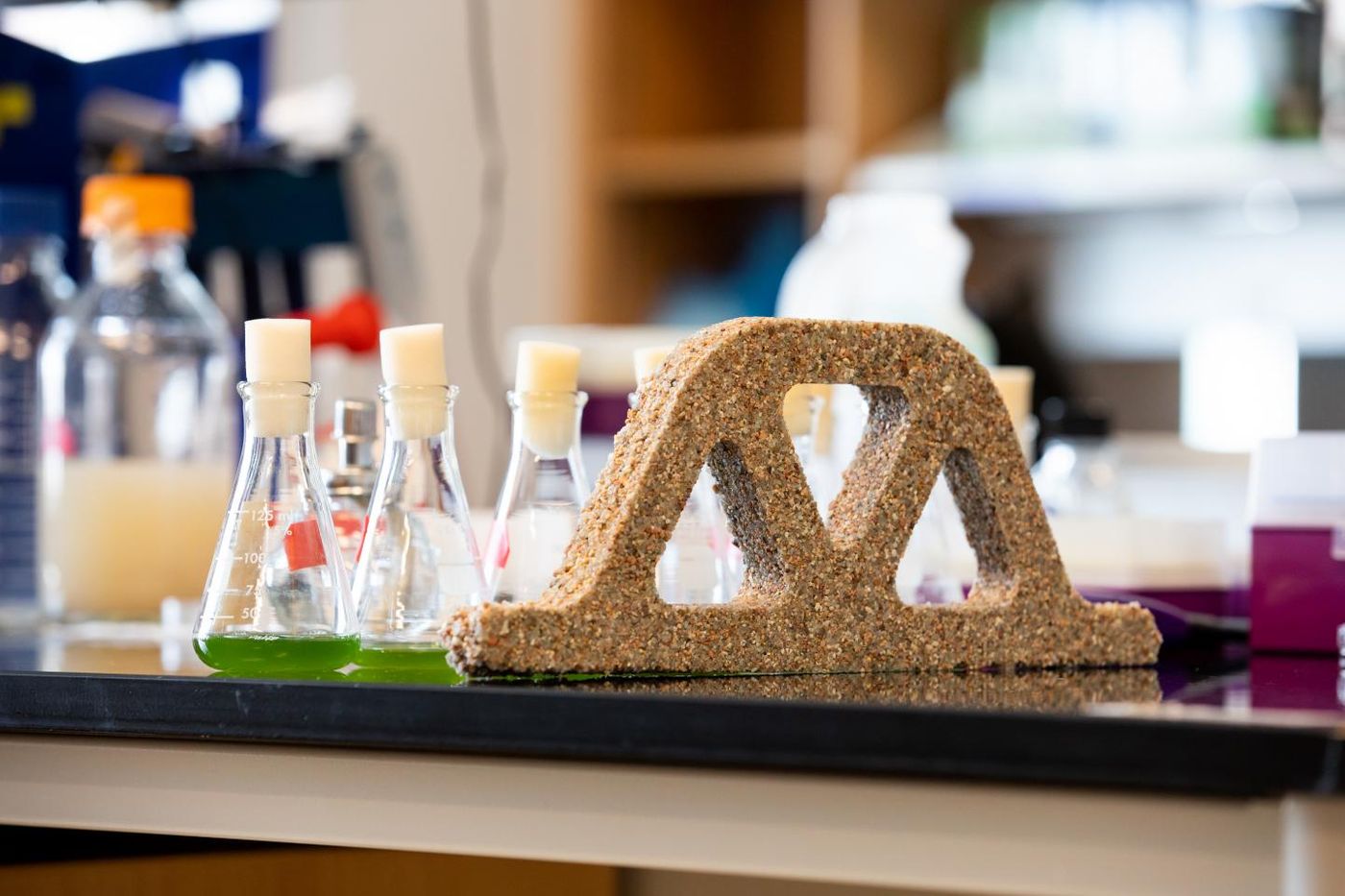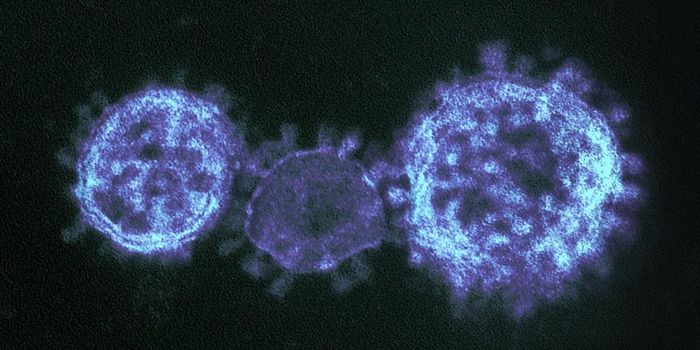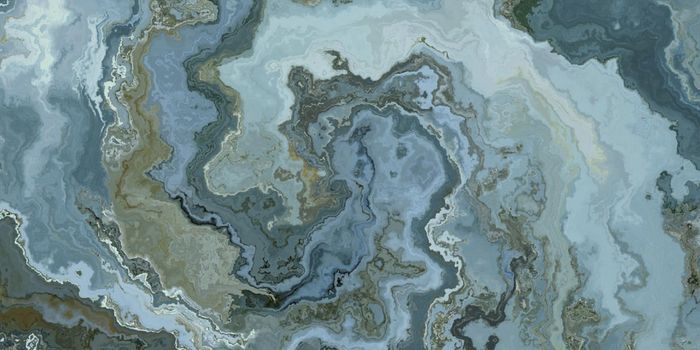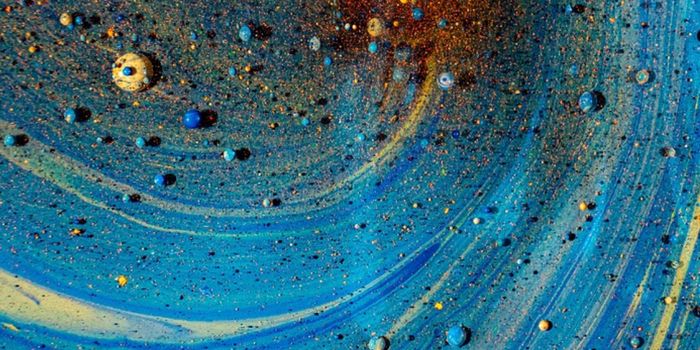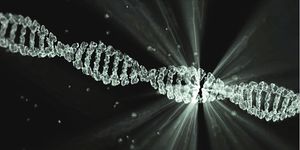Microbes Create a More Sustainable Building Material
Concrete is the second most widely consumed resource on the planet (after water), and it has a massive carbon footprint. It's been estimated that concrete is responsible for about eight percent of the world's carbon dioxide emissions. Scientists have now taken a step towards more sustainable construction by creating a way to use microorganisms to make building materials.
In this research, the scientists engineered a scaffold from sand and a hydrogel that retains moisture, contains nutrients, and serves as a bacterial growth environment. The bacteria in that hydrogel then multiply and release calcium carbonate, which is also the main ingredient of cement. That acts to mineralize the gel and bind the sand. Thus, a brick is created. The work has been reported in the journal Matter.
"We use photosynthetic cyanobacteria to biomineralize the scaffold, so it actually is really green. It looks like a Frankenstein-type material. That's exactly what we're trying to create: something that stays alive," said the senior author study Wil Srubar, head of the Living Materials Laboratory at the University of Colorado Boulder. "It's a lot like making rice crispy treats where you toughen the marshmallow by adding little bits of hard particles."
Because these bricks are made of live materials, they can also be broken in half so additional bricks can be made with the addition of hydrogel, sand, and nutrients. The team was able to use one brick to generate up to eight bricks over three generations. This technology has many potential benefits, apart from the obvious use for construction and home or garage renovation work.
"What we're really excited about is that this challenges the conventional ways in which we manufacture structural building materials," said Srubar. "It really demonstrates the capability of exponential material manufacturing."
The bricks have to be dried out completely to have structural integrity, but the microbes can't lose too much water. Humidity and temperature can be altered based on whether the material is dormant or has to be used structurally.
"This is a material platform that sets the stage for brand new exciting materials that can be engineered to interact and respond to their environments," said Srubar. "We are just trying to bring building materials to life, and I think that is the nugget in this whole thing. We're just scratching the surface and laying the foundation of a new discipline. The sky is the limit."
This type of material might be useful if we have to construct habitats on places like Mars, for example. "In austere environments, these materials would perform especially well because they use light from the sun to grow and proliferate with very little exogenous material needed for their growth," Srubar explained. "It's going to happen one way or another, and we're not going to be trucking bags of cement all the way to Mars. I really do think that we'll be bringing biology with us once we go."
Sources: AAAS/Eurekalert! Via Cell Press, University of Colorado at Boulder, Matter
